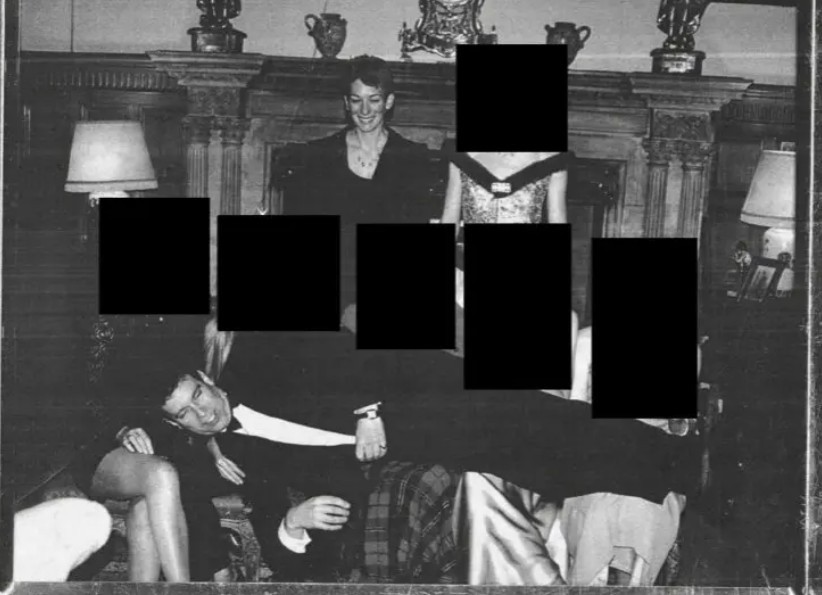The JonBenét Ramsey Murder: New Evidence, Mysterious Ransom Note, and Developments
 |
| Can the murder of JonBenét Ramsey be solved by new items of evidence |
The murder of JonBenét Ramsey remains one of the most haunting and controversial cases in modern American history. On December 26, 1996, the six-year-old beauty queen was found dead in the basement of her family’s Boulder, Colorado home. Despite decades of investigations, theories, and media scrutiny, the case remains unsolved. Central to the mystery is the bizarre ransom note found in the Ramsey home, a piece of evidence that has perplexed investigators and fueled countless theories.
The Tragic Discovery and Initial Investigation
On Christmas morning 1996, JonBenét’s parents, John and Patsy Ramsey, reported her missing after discovering a lengthy ransom note demanding $118,000 for her safe return. Hours later, John Ramsey found JonBenét’s lifeless body in the basement, wrapped in a blanket. She had been strangled with a garrote fashioned from a paintbrush handle and suffered a skull fracture.
The initial investigation was marred by missteps. Police failed to secure the crime scene, allowing family members and friends to move freely within the home. Key evidence was potentially contaminated or lost, complicating efforts to identify the perpetrator. Over the years, investigators pursued multiple leads, including intruder theories, DNA testing, and scrutiny of the Ramsey family themselves. However, no charges have ever been filed.
The Ransom Note: A Puzzling Piece of Evidence
 |
| A two-and-a half-page note left on the stairs of the Ramsey family home demanding a $118,000 ransom. |
The ransom note is one of the most analyzed and debated pieces of evidence in the case. Discovered on a staircase in the Ramsey home, it was handwritten on paper from a notepad found inside the house. The note demanded $118,000, a sum that matched John Ramsey’s recent bonus from work, raising questions about the author’s knowledge of the family’s finances.
Key Details of the Note
-
Length and Content: At over two-and-a-half pages, the ransom note is unusually long for such cases. It begins with a polite yet threatening tone, stating, “We are a group of individuals that represent a small foreign faction” and warning against contacting law enforcement.
-
Language and Style: The note’s language is inconsistent, oscillating between formal and colloquial phrases. It includes references to popular culture, such as “Don’t try to grow a brain, John,” a possible nod to lines from movies like Speed.
-
Penmanship and Paper: Forensic analysis confirmed that the paper and pen used to write the note were taken from the Ramsey home. This finding suggests the note was composed after the intruder entered the house, a risky and time-consuming act that defies logic for most criminal scenarios.
-
Author Analysis: Experts have debated whether the note was written by a man or woman. Some argue that the phrasing and emotional tone suggest a female author, while others believe it was an attempt to obfuscate the writer’s true identity.
Additional Insights from Investigations
Recent reviews of the ransom note highlighted peculiarities, such as the repeated use of phrases like “southern common sense,” which some believe may hint at the writer’s regional or cultural background. Handwriting experts also noted that the note displayed signs of deliberate disguise, with inconsistent pressure and slanting of letters.
Another critical detail involves the note’s content. Some investigators have speculated that the excessive length may have been an attempt to misdirect law enforcement and provide a false narrative about the crime. The demand for $118,000—a specific and unusual sum—remains one of the most baffling aspects of the case.
Developments in the Case
In recent years, technological advancements and renewed efforts have brought fresh attention to the JonBenét Ramsey case. Here are some of the significant updates:
1. Enhanced DNA Testing
Advances in DNA technology have enabled investigators to reexamine evidence collected at the crime scene. In 2008, the Boulder District Attorney’s office announced that previously unidentified male DNA found on JonBenét’s clothing did not match any family members, seemingly clearing the Ramseys of involvement. However, critics have questioned the reliability of this finding, noting the possibility of contamination.
In 2022, the Boulder Police Department partnered with private labs to explore advanced DNA sequencing techniques, including genetic genealogy. This method, which has solved cold cases like the Golden State Killer, offers renewed hope for identifying the perpetrator.
2. Intruder Theories
Proponents of the intruder theory point to evidence suggesting an outside party’s involvement. For example, a broken basement window and a partially open suitcase near the crime scene indicate a possible point of entry and escape. Additionally, unidentified boot prints and fibers found on JonBenét’s body support the theory of an external assailant.
3. Family Suspicions
While the Ramseys were initially cleared of wrongdoing, skepticism has persisted. Some experts believe the ransom note was staged to mislead investigators, arguing that the length and content suggest insider knowledge. Handwriting analysis comparing the note to Patsy Ramsey’s penmanship yielded inconclusive results, further fueling debate.
4. Public Appeals and Advocacy
JonBenét’s half-brother, John Andrew Ramsey, has been vocal in advocating for renewed efforts to solve the case. In a 2022 interview, he urged authorities to make better use of modern technology and consider new leads. His push for transparency and collaboration has reignited public interest in the case.
Theories and Controversies
The JonBenét Ramsey case has given rise to numerous theories, reflecting the complexity and contradictions of the evidence.
1. The Intruder Theory
Supporters of the intruder theory argue that an unknown assailant entered the Ramsey home, wrote the ransom note, and killed JonBenét. This hypothesis is bolstered by the presence of DNA evidence, the unexplained boot prints, and the broken window.
2. The Family Theory
Skeptics of the intruder theory suggest that the crime was an accidental death covered up by one or more family members. They cite the ransom note’s suspicious origin and the family’s behavior after the murder as potential red flags.
3. The Staged Crime Scene
Some investigators believe the crime scene was deliberately staged to mislead authorities. The ransom note, in particular, is viewed by many as a key element of this staging, given its peculiarities and the improbability of an intruder spending so much time composing it.
Conclusion: The Enduring Mystery
The murder of JonBenét Ramsey remains an open wound in the annals of criminal justice. Despite significant advancements in forensic science and decades of investigation, the case continues to defy resolution. The ransom note—a central piece of evidence—embodies the complexity and contradictions of this enduring mystery.
As new technology and investigative techniques emerge, there is hope that the truth will eventually come to light. For now, the case stands as a chilling reminder of the fragility of justice and the enduring quest for answers in the face of tragedy.
 Who Is Briana Boston? Florida Mother Arrested For Threat To BlueCross BlueShield Who Is Briana Boston? Florida Mother Arrested For Threat To BlueCross BlueShield When a Florida mother called a health insurance company regarding a denied claim, she used the phrase "Delay, Deny, Depose" in apparent reference to the ... |
 New details emerge about Luigi Mangione: Indicted for Terrorism in the murder of UnitedHealthcare CEO New details emerge about Luigi Mangione: Indicted for Terrorism in the murder of UnitedHealthcare CEO A New York grand jury has indicted Luigi Mangione on terrorism charges related to the Dec. 4 killing of UnitedHealthcare CEO Brian Thompson. |
 Manhunt Intensifies for Las Vegas Murder Suspect with $33,500 in Rewards Offered Manhunt Intensifies for Las Vegas Murder Suspect with $33,500 in Rewards Offered Authorities have renewed their call for public assistance in locating Oswaldo Nathanahel Perez-Sanchez, a 26-year-old man wanted for the murder of his girlfriend and a ... |
 Who is Richard Allen, Delphi Murders: A 130-Year Sentence and the Shocking Details Who is Richard Allen, Delphi Murders: A 130-Year Sentence and the Shocking Details This article delves into who Richard Allen is, his background, the events surrounding the Delphi murders, and his sentencing to 130 years in prison. |
 5 Dead in Utah Murder-Suicide: What Led to the Tragedy? 5 Dead in Utah Murder-Suicide: What Led to the Tragedy? Tragedy struck the quiet community of Enoch, Utah, when five members of a single family were found dead in what authorities have labeled a murder-suicide. |
























